BLOG - Page 27
Recently created mixtures:

Sea-Buckthorn Macerated oil
February 7, 2019

Home made air freshener
June 29, 2016

Homemade Dog-rose distillate
June 28, 2016

Homemade jasmine distillate
June 22, 2016

Moxibustion treatment with Moxa stick
May 30, 2016

Face and body gentle oil cleanser
May 26, 2016
BLOG / LATEST ADDITIONS!
Basil Essential Oil (Ocimum Basilicum) ☸ Essential oils ☸ Base / General
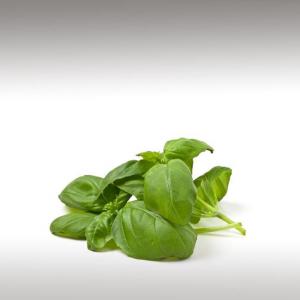

Botanical Name: Ocimum basilicum
Common Method of Extraction: Steam distillation
Part Typically Used: Flowering plant (Leaves and Flowers/Buds)
Color: Clear
Consistency: Thin
Perfumery Note: Top
Strength of Initial Aroma: Fresh, warm, spicy, herbaceous
Basil, Thai basil, or Sweet basil, is a common name for the culinary herb Ocimum basilicum of the family Lamiaceae (mints), sometimes known as Saint Joseph's Wort in some English-speaking countries.
Basil is possibly native to India, and has been cultivated there for more than 5,000 years. A much favored herb in India, it is held sacred to Krishna and Vishnu, and the leaves are even chewed before taking part in religious ceremonies.
The word Basil comes from the Greek (basileus), meaning "King", as it has come to be associated with the Feast of the Cross commemorating the finding of the True Cross by St. Helena, mother of the emperor Constantine I. Basil is still considered the "King of herbs" by many cookery authors.
Depending on the species and cultivar, the leaves may taste somewhat like anise, with a strong, pungent, often sweet smell.
Basil grows between 30 - 130 centimeters tall, with opposite, light green, silky leaves 3 - 11 centimeters long. The flowers are small, white in color and arranged in a terminal spike. Basil is very sensitive to cold, with best growth in hot, dry conditions. It behaves as an annual if there is any chance of a frost. Grows best in strong sunlight.
Once a stem produces flowers, foliage production stops on that stem, the stem becomes woody, and essential oil production declines. To prevent this, a Basil-grower may pinch off any flower stems before they are fully mature. Because only the blooming stem is so affected, some stems can be pinched for leaf production, while others are left to bloom for decoration or seeds.
Chemical structure:
The various Basil have such different scents because the herb has a number of different essential oils that come together in different proportions for various breeds. The strong clove scent of Sweet basil is derived from eugenol.
The chemical composition of Basil essential oil can vary greatly between varieties, batches and suppliers. Ideally, look for Basil essential oil that has a a significant percentage of linalooland that is weak in methyl chavicol (Estragole), a suspected carcinogen. Basil oils that are higher in linalool tend to have a more appealing aroma. Additionally, linalool is said to act as an insect repellent.
Common Method of Extraction: Steam distillation
Part Typically Used: Flowering plant (Leaves and Flowers/Buds)
Color: Clear
Consistency: Thin
Perfumery Note: Top
Strength of Initial Aroma: Fresh, warm, spicy, herbaceous
Basil, Thai basil, or Sweet basil, is a common name for the culinary herb Ocimum basilicum of the family Lamiaceae (mints), sometimes known as Saint Joseph's Wort in some English-speaking countries.
Basil is possibly native to India, and has been cultivated there for more than 5,000 years. A much favored herb in India, it is held sacred to Krishna and Vishnu, and the leaves are even chewed before taking part in religious ceremonies.
The word Basil comes from the Greek (basileus), meaning "King", as it has come to be associated with the Feast of the Cross commemorating the finding of the True Cross by St. Helena, mother of the emperor Constantine I. Basil is still considered the "King of herbs" by many cookery authors.
Depending on the species and cultivar, the leaves may taste somewhat like anise, with a strong, pungent, often sweet smell.
Basil grows between 30 - 130 centimeters tall, with opposite, light green, silky leaves 3 - 11 centimeters long. The flowers are small, white in color and arranged in a terminal spike. Basil is very sensitive to cold, with best growth in hot, dry conditions. It behaves as an annual if there is any chance of a frost. Grows best in strong sunlight.
Once a stem produces flowers, foliage production stops on that stem, the stem becomes woody, and essential oil production declines. To prevent this, a Basil-grower may pinch off any flower stems before they are fully mature. Because only the blooming stem is so affected, some stems can be pinched for leaf production, while others are left to bloom for decoration or seeds.
Chemical structure:
The various Basil have such different scents because the herb has a number of different essential oils that come together in different proportions for various breeds. The strong clove scent of Sweet basil is derived from eugenol.
The chemical composition of Basil essential oil can vary greatly between varieties, batches and suppliers. Ideally, look for Basil essential oil that has a a significant percentage of linalooland that is weak in methyl chavicol (Estragole), a suspected carcinogen. Basil oils that are higher in linalool tend to have a more appealing aroma. Additionally, linalool is said to act as an insect repellent.
Submitted by OperaDreamhouse (March 25, 2015)
Palo Santo Essential Oil (Bursera Graveolens) ☸ Essential oils ☸ Spiritual Practises
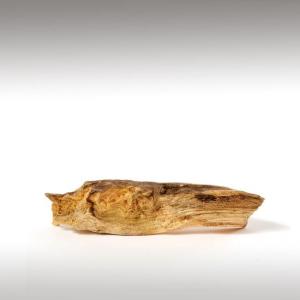

Palo Santo essential oil was used during the time of the Incas for its reputed spiritual purifying properties.
This tree inhabits the South American Gran Chaco region (Northern Argentina, Paraguay, Bolivia and the Brazilian Mato Grosso). Palo Santo is used by medicine-men and shamans at Ayahuasca ceremonies, rituals, healing and cleansing sessions. It has a surprisingly strong and sweet smell when burned, which is why palo santo is used as incense.
Palo Santo is used in South America in much the same way as White Ceremonial Sage is used in North America - to combat negative energy and to cleanse the space.
Palo Santo has been used for hundreds of years by native shamans for spiritual applications. For those that integrate essential oils within meditation, prayer or other spiritual applications, Palo Santo is an oil to pay close attention to.
It is important oil for use in Chakra applications. Opens the Third Eye and Crown Chakras.
This tree inhabits the South American Gran Chaco region (Northern Argentina, Paraguay, Bolivia and the Brazilian Mato Grosso). Palo Santo is used by medicine-men and shamans at Ayahuasca ceremonies, rituals, healing and cleansing sessions. It has a surprisingly strong and sweet smell when burned, which is why palo santo is used as incense.
Palo Santo is used in South America in much the same way as White Ceremonial Sage is used in North America - to combat negative energy and to cleanse the space.
Palo Santo has been used for hundreds of years by native shamans for spiritual applications. For those that integrate essential oils within meditation, prayer or other spiritual applications, Palo Santo is an oil to pay close attention to.
It is important oil for use in Chakra applications. Opens the Third Eye and Crown Chakras.
Submitted by OperaDreamhouse (March 25, 2015)
Anise Seed Essential Oil (Pimpinella Anisum) ☸ Essential oils ☸ Base / General
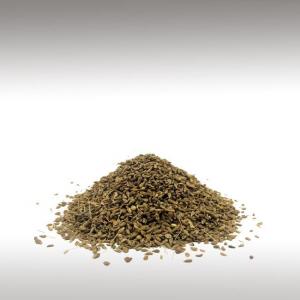

Botanical Name: Pimpinella anisum
Common Method of Extraction: Steam distillation
Part Typically Used: Seed
Color: Clear
Consistency: Thin
Perfumery Note: Middle
Strength of Initial Aroma: Fresh, sweet, spicy, licorice-like
Do not confuse Anise seed oil (Pimpinella anisum) with Anise Star oil (Illicium verum) which is produced from the fruit of a tree.
Anise (Pimpinella anisum), also called Aniseed, is a flowering plant in the family Apiaceae native to the eastern Mediterranean region and Southwest Asia. Its flavor has similarities with some other spices, such as star anise, fennel, and liquorice.
In this country Anise has been in use since the fourteenth century, and has been cultivated in English gardens from the middle of the sixteenth century, but it ripens its seeds here only in very warm summers, and it is chiefly in warmer districts that it is grown on a commercial scale, Southern Russia, Bulgaria, Germany, Malta, Spain, Italy, North Africa and Greece producing large quantities. It has also been introduced into India and South America.
Anise is one of the herbs that was supposed to avert the Evil Eye.
Anise is a herbaceous annual plant growing to 0,9 m or more tall. The flowers are white, approximately 3 mm in diameter, produced in dense umbels. The fruit is an oblong dry schizocarp 3–6 mm long, usually called "Aniseed".
Anise plants grow best in light, fertile, well-drained soil. The seeds should be planted as soon as the ground warms up in spring. It has a pungent liquorice-like smell and is also known as Anise and Sweet cumin.
The fruit, or so-called seeds. When threshed out, the seeds may be easily dried in trays, in a current of air in half-shade, out-of-doors, or by moderate heat. When dry, they are greyish brown, ovate, hairy, about one-fifth of an inch long, with ten crenate ribs and often have the stalk attached. They should be free from earthy matter. The taste is sweet and spicy, and the odour aromatic and agreeable.
Essential oil yielded by distillation is generally around 2-3% and anethole makes up 80-90% of this.
Common Method of Extraction: Steam distillation
Part Typically Used: Seed
Color: Clear
Consistency: Thin
Perfumery Note: Middle
Strength of Initial Aroma: Fresh, sweet, spicy, licorice-like
Do not confuse Anise seed oil (Pimpinella anisum) with Anise Star oil (Illicium verum) which is produced from the fruit of a tree.
Anise (Pimpinella anisum), also called Aniseed, is a flowering plant in the family Apiaceae native to the eastern Mediterranean region and Southwest Asia. Its flavor has similarities with some other spices, such as star anise, fennel, and liquorice.
In this country Anise has been in use since the fourteenth century, and has been cultivated in English gardens from the middle of the sixteenth century, but it ripens its seeds here only in very warm summers, and it is chiefly in warmer districts that it is grown on a commercial scale, Southern Russia, Bulgaria, Germany, Malta, Spain, Italy, North Africa and Greece producing large quantities. It has also been introduced into India and South America.
Anise is one of the herbs that was supposed to avert the Evil Eye.
Anise is a herbaceous annual plant growing to 0,9 m or more tall. The flowers are white, approximately 3 mm in diameter, produced in dense umbels. The fruit is an oblong dry schizocarp 3–6 mm long, usually called "Aniseed".
Anise plants grow best in light, fertile, well-drained soil. The seeds should be planted as soon as the ground warms up in spring. It has a pungent liquorice-like smell and is also known as Anise and Sweet cumin.
The fruit, or so-called seeds. When threshed out, the seeds may be easily dried in trays, in a current of air in half-shade, out-of-doors, or by moderate heat. When dry, they are greyish brown, ovate, hairy, about one-fifth of an inch long, with ten crenate ribs and often have the stalk attached. They should be free from earthy matter. The taste is sweet and spicy, and the odour aromatic and agreeable.
Essential oil yielded by distillation is generally around 2-3% and anethole makes up 80-90% of this.
Submitted by OperaDreamhouse (March 24, 2015)
Benzoin Essential Oil (Styrax Benzoin) ☸ Essential oils ☸ Base / General
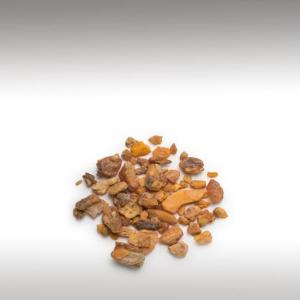

Botanical Name: Styrax benzoin
Common Method of Extraction: Solvent Extracted
Part Typically Used: Resin
Color: Golden brown
Consistency: Thick Viscosity
Perfumery Note: Base
Strength of Initial Aroma: Sweet, warm and vanilla-like aroma
Styrax benzoin is a tree which originated in Laos and Vietnam, but now grows in and around Malaysia, Java and Sumatra.
Styrax benzoin is a species of tree native to Sumatra in Indonesia. Common names for the tree include gum benjamin tree, loban, kemenyan, onycha, and Sumatra benzoin tree. It is a common member of the forests of Sumatra, where it grows to about 15 meters in maximum height.
Benzoin is the gum resin which exudes from the bark after tapping and the trees can apparently produce resin in this way for about 15 to 20 years.
Benzoin oil is extracted from resin of the Styrax benzoin tree and belongs to the Stryracaceae family. The tree is from Java, Sumatra and Thailand and grows to 8 meters. Deep incisions are made in the trunk of the tree, from which the grayish colored sap exudes. When the resinous lump becomes hard and brittle, it is collected from the bark.
When incisions are made in the trunk of the tree it exudes a balsamic liquid which solidifies after exposure to air and sunlight, resulting in a reddish-brown gum. The balsamic liquid collects as "tears" beneath the bark or around the incision cuts and although it is known as a gum, it is actually a balsamic resin.
The oil is extracted from the balsamic resin by means of a solvent, and because the resulting resinoid is still too viscous (thick) to work with at this stage, a diluent is added to the resinoid to make it mobile and easier to use. After this process, the oil is referred to as a resinoid. The resulting oil has a balsamic, creamy aroma reminiscent of vanilla due the presence of a component called vanillin, which also occurs in vanilla.
Benzoin oil has been in use for thousands of years ago instances have been found of its use in some of the oldest civilizations of the world, particularly in their religious ceremonies. Benzoin, also known as gum Benjamin, is one of the classic ingredients of incense.
From early records we know benzoin resin was imported by the Chinese and the ancient Egyptians via the Red Sea. Papyrus records indicate that it was ground into powder and mixed with other substances such as pine, juniper, galbanum, cypress and labdanum into incense, and often made into cones that were placed on the heads of Egyptian dancers.
The Ancient Greeks and Romans knew benzoin, although they called it by quite different names - "Silphion" to the Greeks, and "Laserpitium" to the Romans. They would include the powdered resin in pot-pourris because of its very powerful fixative properties.
In England its use was first recorded between the 15th and 16th centuries when it was brought over by spice traders and used in powdered form to make dry perfumes, one of which was worn by Queen Elizabeth I.
The Portuguese navigator, Barboza, is thought to have introduced the precious resin to Europe. Later, in 1623, the resin’s properties were sufficiently valued for the British to set up a factory in Siam to produce and export it.
Chemical structure:
Benzoin has a number of chemical components, such as benzoic, cinnamic acids, benzyl benzoate, benzoic aldehyde, vanillin and coniferyl benzoate.
Common Method of Extraction: Solvent Extracted
Part Typically Used: Resin
Color: Golden brown
Consistency: Thick Viscosity
Perfumery Note: Base
Strength of Initial Aroma: Sweet, warm and vanilla-like aroma
Styrax benzoin is a tree which originated in Laos and Vietnam, but now grows in and around Malaysia, Java and Sumatra.
Styrax benzoin is a species of tree native to Sumatra in Indonesia. Common names for the tree include gum benjamin tree, loban, kemenyan, onycha, and Sumatra benzoin tree. It is a common member of the forests of Sumatra, where it grows to about 15 meters in maximum height.
Benzoin is the gum resin which exudes from the bark after tapping and the trees can apparently produce resin in this way for about 15 to 20 years.
Benzoin oil is extracted from resin of the Styrax benzoin tree and belongs to the Stryracaceae family. The tree is from Java, Sumatra and Thailand and grows to 8 meters. Deep incisions are made in the trunk of the tree, from which the grayish colored sap exudes. When the resinous lump becomes hard and brittle, it is collected from the bark.
When incisions are made in the trunk of the tree it exudes a balsamic liquid which solidifies after exposure to air and sunlight, resulting in a reddish-brown gum. The balsamic liquid collects as "tears" beneath the bark or around the incision cuts and although it is known as a gum, it is actually a balsamic resin.
The oil is extracted from the balsamic resin by means of a solvent, and because the resulting resinoid is still too viscous (thick) to work with at this stage, a diluent is added to the resinoid to make it mobile and easier to use. After this process, the oil is referred to as a resinoid. The resulting oil has a balsamic, creamy aroma reminiscent of vanilla due the presence of a component called vanillin, which also occurs in vanilla.
Benzoin oil has been in use for thousands of years ago instances have been found of its use in some of the oldest civilizations of the world, particularly in their religious ceremonies. Benzoin, also known as gum Benjamin, is one of the classic ingredients of incense.
From early records we know benzoin resin was imported by the Chinese and the ancient Egyptians via the Red Sea. Papyrus records indicate that it was ground into powder and mixed with other substances such as pine, juniper, galbanum, cypress and labdanum into incense, and often made into cones that were placed on the heads of Egyptian dancers.
The Ancient Greeks and Romans knew benzoin, although they called it by quite different names - "Silphion" to the Greeks, and "Laserpitium" to the Romans. They would include the powdered resin in pot-pourris because of its very powerful fixative properties.
In England its use was first recorded between the 15th and 16th centuries when it was brought over by spice traders and used in powdered form to make dry perfumes, one of which was worn by Queen Elizabeth I.
The Portuguese navigator, Barboza, is thought to have introduced the precious resin to Europe. Later, in 1623, the resin’s properties were sufficiently valued for the British to set up a factory in Siam to produce and export it.
Chemical structure:
Benzoin has a number of chemical components, such as benzoic, cinnamic acids, benzyl benzoate, benzoic aldehyde, vanillin and coniferyl benzoate.
Submitted by OperaDreamhouse (March 24, 2015)
Palo Santo Essential Oil (Bursera Graveolens) ☸ Essential oils ☸ Base / General


Botanical Name: Bursera graveolens
Common Method of Extraction: Steam distilled
Part Typically Used: Dead heartwood
Color: Clear - Pale Yellow
Consistency: Thin
Perfumery Note: Middle
Strength of Initial Aroma: Sweet, woody, citrusy and slightly minty. Reminiscent of Frankincense.
Palo Santo is common today as a type of incense. Palo Santo Oil or “Holy Wood” is a very spiritual essential oil.
Bursera graveolens is a wild tree native from Mexico and the Yucatán Peninsula to Peru and Venezuela that inhabits the South American Gran Chaco region. It is also found in Costa Rica, El Salvador, Guatemala, Honduras, Colombia, Ecuador, Peru and on the Galapagos islands.
The tree belongs to the same family (Burseraceae) as Frankincense and Myrrh. Palo Santo (or Palosanto) is used for crafting objects and to produce burning sticks: however, production ofessential oilis attracting most of the modern interest. Chemical composition, as reflected by aroma, is variable.
The essential oil is distilled from the heartwood of the Palo Santo tree. It is fascinating that the heartwoodmust be at least two years old and be from the red wood to produce the higher quality oil. The longer the tree has been dead, the more powerful the oil (This also holds true for Frankincense essential oil).
The use of Palo Santo from Bursera Graveolens is traditional in South America, especially in Ecuador. According to the local customs, it is used against the "Mala Energía" (Bad energy).
In Ecuador it is against the law to remove or cut down Palo Santo trees as they are protected. Additionally, even taking the dead trees has limitations and must be permitted through the government. So, there are very few companies that are permitted to even touch the trees, more or less produce the essential oil.
These are protected, one thousand year old trees from which the windfall is collected from the ground and considered sacred by the indigenous peoples for many generations.
Tree grows for about 40 years and then dies. Then, it has to lay down for about 10 more years before people can process it.
The essential oil of the Palo Santo tree has many applications in aromatherapy.
Chemical structure:
Aged heartwood is rich in terpenes such as limonene and α-terpineol.
Animal studies show that d-limonene is contained in the peels of Citrus fruits such as Grapefruit, Orange and Lemon. It is a powerful antioxidant.
Common Method of Extraction: Steam distilled
Part Typically Used: Dead heartwood
Color: Clear - Pale Yellow
Consistency: Thin
Perfumery Note: Middle
Strength of Initial Aroma: Sweet, woody, citrusy and slightly minty. Reminiscent of Frankincense.
Palo Santo is common today as a type of incense. Palo Santo Oil or “Holy Wood” is a very spiritual essential oil.
Bursera graveolens is a wild tree native from Mexico and the Yucatán Peninsula to Peru and Venezuela that inhabits the South American Gran Chaco region. It is also found in Costa Rica, El Salvador, Guatemala, Honduras, Colombia, Ecuador, Peru and on the Galapagos islands.
The tree belongs to the same family (Burseraceae) as Frankincense and Myrrh. Palo Santo (or Palosanto) is used for crafting objects and to produce burning sticks: however, production ofessential oilis attracting most of the modern interest. Chemical composition, as reflected by aroma, is variable.
The essential oil is distilled from the heartwood of the Palo Santo tree. It is fascinating that the heartwoodmust be at least two years old and be from the red wood to produce the higher quality oil. The longer the tree has been dead, the more powerful the oil (This also holds true for Frankincense essential oil).
The use of Palo Santo from Bursera Graveolens is traditional in South America, especially in Ecuador. According to the local customs, it is used against the "Mala Energía" (Bad energy).
In Ecuador it is against the law to remove or cut down Palo Santo trees as they are protected. Additionally, even taking the dead trees has limitations and must be permitted through the government. So, there are very few companies that are permitted to even touch the trees, more or less produce the essential oil.
These are protected, one thousand year old trees from which the windfall is collected from the ground and considered sacred by the indigenous peoples for many generations.
Tree grows for about 40 years and then dies. Then, it has to lay down for about 10 more years before people can process it.
The essential oil of the Palo Santo tree has many applications in aromatherapy.
Chemical structure:
Aged heartwood is rich in terpenes such as limonene and α-terpineol.
Animal studies show that d-limonene is contained in the peels of Citrus fruits such as Grapefruit, Orange and Lemon. It is a powerful antioxidant.
Submitted by OperaDreamhouse (March 24, 2015)
Coconut Flakes (Cocos Nucifera) ☸ Ingredients ☸ Base / General
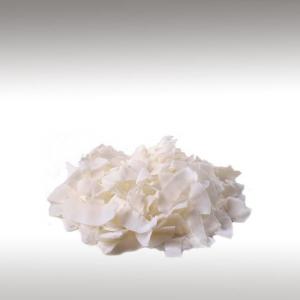

The Coconuts that drop from palm trees in tropical climates have enriched salads, curries and pies worldwide. Organic Coconut Flakes are made from dried and flaked Organic Coconut flesh. These are large Flakes that are popular in cereals, muesli & baking.
The unsweetened Coconut Flakes are a concentrated source of calories, which means they have a high-calorie content compared to their serving size. Now studies show that the medium chain fatty acids in Coconuts are not like other saturated fats. One, lauric acid, is the predominant fatty acid in mother's milk.
Shredded and flaked air-dried coconut can lose flavor. The best Flakes for a healthy diet are the freshest and most pure.
This premiumdried Coconut contains no additives or preservatives, and is not sweetened.
Chemical structure:
Coconut is classified as a “functional food” because it provides many health benefits over and beyond its already impressive nutritional content. Coconut contains high levels of lauric acid which is converted by the body into monolaurin. Monolaurin is responsible for solubilizing the lipid envelope of virus’s, causing the disintegration of the virus envelope and subsequent death of the virus.
Dried Coconuts are a good source of copper, zinc, magnesium, manganese, iron, B Vitamins and even calcium.
The unsweetened Coconut Flakes are a concentrated source of calories, which means they have a high-calorie content compared to their serving size. Now studies show that the medium chain fatty acids in Coconuts are not like other saturated fats. One, lauric acid, is the predominant fatty acid in mother's milk.
Shredded and flaked air-dried coconut can lose flavor. The best Flakes for a healthy diet are the freshest and most pure.
This premiumdried Coconut contains no additives or preservatives, and is not sweetened.
Chemical structure:
Coconut is classified as a “functional food” because it provides many health benefits over and beyond its already impressive nutritional content. Coconut contains high levels of lauric acid which is converted by the body into monolaurin. Monolaurin is responsible for solubilizing the lipid envelope of virus’s, causing the disintegration of the virus envelope and subsequent death of the virus.
Dried Coconuts are a good source of copper, zinc, magnesium, manganese, iron, B Vitamins and even calcium.
Submitted by OperaDreamhouse (March 9, 2015)
Marjoram Essential Oil (Origanum Majorana) ☸ Essential oils ☸ Base / General
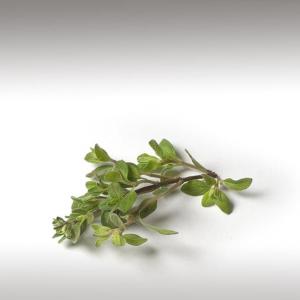

Botanical Name: Origanum majorana
Common Method of Extraction: Steam Distilled
Part Typically Used: Leaves and tops
Color: Yellowish in color (darkening to brown as it ages)
Consistency: Thin
Perfumery Note: Middle
Strength of Initial Aroma: Spicy,woody, warm and mildly camphorus aroma.
Marjoram (Origanum Majorana) is a somewhat cold-sensitive perennial herb or under shrub with sweet pine and citrus flavors. In some Middle-Eastern countries, Marjoram is synonymous with Oregano, and there the names Sweet marjoram and Knotted Marjoram are used to distinguish it from other plants of the genus Origanum.
It is native to the Mediterranean region, growing naturally in both central European and North African countries. Its original name comes from a greek word meaning "Joy of the Mountains".
This tender bushy perennial herb, about 60cm high, has a hairy stem, dark green oval leaves and small white or pink flowers. Originally from the Mediterranean region, the word "Origanum" is from the Greek word "Orosganos" meaning "Joy of the Mountain" and was given to newlyweds as token of good fortune.
The whole plant is highly aromatic, exuding a pleasing peppery, warm and fresh fragrance.
Sweet Marjoram is cultivated for the production of essential oil in Egypt, France, Germany, Hungary, Tunisia, Spain and more recently in the USA. In the south of France, harvesting usually takes place between August and September when the flowers are in full bloom. After collecting, the garbage is dried for several days and the stems removed before charging the still.
Marjoram is indigenous to Cyprus and southern Turkey, and was known to the Greeks and Romans as a symbol of happiness. The Greeks associated marjoram with Aphrodite, the Goddess of love, beauty and fertility.
It was also used in marriage ceremonies as it is sacred to Venus, her son Hymen and, even more anciently, to the Earth Goddess Ge (Gaia). The modern practitioner may use Marjoram to connect with the spirits of the ancestors or to communicate with a departed loved one. Marjoram was considered a "Lucky Plant", protective, spreading joy and bringing good fortune.
Marjoram spread far and wide reaching Egypt around 2000 BC, according to early records. The Egyptians dedicated Marjoram to the god of the underworld, Osiris, and it was used as a funerary herb as well as to produce unguents, medicines and even love potions.
Chemical structure:
It has many chemical components, some of which are borneol, camphor and pinene.
Marjoram oil is extracted from the fresh and dried leaves and flowering tops of the plant by steam distillation and yields 0.5 - 3 %.
Common Method of Extraction: Steam Distilled
Part Typically Used: Leaves and tops
Color: Yellowish in color (darkening to brown as it ages)
Consistency: Thin
Perfumery Note: Middle
Strength of Initial Aroma: Spicy,woody, warm and mildly camphorus aroma.
Marjoram (Origanum Majorana) is a somewhat cold-sensitive perennial herb or under shrub with sweet pine and citrus flavors. In some Middle-Eastern countries, Marjoram is synonymous with Oregano, and there the names Sweet marjoram and Knotted Marjoram are used to distinguish it from other plants of the genus Origanum.
It is native to the Mediterranean region, growing naturally in both central European and North African countries. Its original name comes from a greek word meaning "Joy of the Mountains".
This tender bushy perennial herb, about 60cm high, has a hairy stem, dark green oval leaves and small white or pink flowers. Originally from the Mediterranean region, the word "Origanum" is from the Greek word "Orosganos" meaning "Joy of the Mountain" and was given to newlyweds as token of good fortune.
The whole plant is highly aromatic, exuding a pleasing peppery, warm and fresh fragrance.
Sweet Marjoram is cultivated for the production of essential oil in Egypt, France, Germany, Hungary, Tunisia, Spain and more recently in the USA. In the south of France, harvesting usually takes place between August and September when the flowers are in full bloom. After collecting, the garbage is dried for several days and the stems removed before charging the still.
Marjoram is indigenous to Cyprus and southern Turkey, and was known to the Greeks and Romans as a symbol of happiness. The Greeks associated marjoram with Aphrodite, the Goddess of love, beauty and fertility.
It was also used in marriage ceremonies as it is sacred to Venus, her son Hymen and, even more anciently, to the Earth Goddess Ge (Gaia). The modern practitioner may use Marjoram to connect with the spirits of the ancestors or to communicate with a departed loved one. Marjoram was considered a "Lucky Plant", protective, spreading joy and bringing good fortune.
Marjoram spread far and wide reaching Egypt around 2000 BC, according to early records. The Egyptians dedicated Marjoram to the god of the underworld, Osiris, and it was used as a funerary herb as well as to produce unguents, medicines and even love potions.
Chemical structure:
It has many chemical components, some of which are borneol, camphor and pinene.
Marjoram oil is extracted from the fresh and dried leaves and flowering tops of the plant by steam distillation and yields 0.5 - 3 %.
Submitted by OperaDreamhouse (March 8, 2015)
Marjoram Essential Oil (Origanum Majorana) ☸ Essential oils ☸ Medicine / Health

 Children: Avoid using on children under 6 years.
Children: Avoid using on children under 6 years.
Submitted by OperaDreamhouse (March 8, 2015)
Marjoram Essential Oil (Origanum Majorana) ☸ Essential oils ☸ Spiritual Practises


Marjoram essential oil is mentally strengthening and relaxing. Calms the nervous tension. Spicy scent and woody.
The Greeks and the Romans associated Marjoram with transition through physical death.
Death is also a metaphor for transformation which is the key here. Therefore, those who are experiencing the opposite feelings such as disconnected, insecure, unsupported can transform those feelings with the assistance of Marjoram oil.
As we release negative feelings and we become more balanced, we are able to accept and love ourselves more fully and restore our power to ourselves.
Marjoram affects the heart and Solar Plexus Chakras.
The Greeks and the Romans associated Marjoram with transition through physical death.
Death is also a metaphor for transformation which is the key here. Therefore, those who are experiencing the opposite feelings such as disconnected, insecure, unsupported can transform those feelings with the assistance of Marjoram oil.
As we release negative feelings and we become more balanced, we are able to accept and love ourselves more fully and restore our power to ourselves.
Marjoram affects the heart and Solar Plexus Chakras.
Submitted by OperaDreamhouse (March 8, 2015)
Coconut Milk (Cocos Nucifera) ☸ Ingredients ☸ Base / General
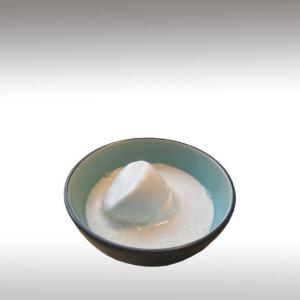

Coconut milk is the liquid that comes from the grated meat of abrown Coconut. It should not be confused with Coconut Water. The colour and rich taste of Coconut Milk can be attributed to the high oil content.
The best Coconut Milk is made from the pressing of fresh, ripe Coconut meat.
The grating process itself can be carried out manually or with a more modern grating machine. Several grades of coconut milk exist: from thick at 20 - 22% fat to thin at 5 - 7%. Thick Milk is prepared by directly squeezing grated Coconut meat through cheesecloth. The squeezed Coconut meat is then soaked in water and squeezed further to produce thin Coconut milk.
Coconut Milk can be made at home by processing grated Coconut with hot water or milk, which extracts the oil and aromatic compounds. It has then a fat content of 17 - 24% depending on the fat level of the Coconut meat and the quantity of added water.
Good Coconut Milk has a clean, white color, rich creamy taste and is mildly sweet with the essence of Coconut. Once opened, cans of Coconut Milk must be refrigerated and are usually only good for a few days.
From Thailand to Hawaii to the West Indies, Coconut Milk has served to nourish millions worldwide as the creamy cornerstone of their delicious regional dishes.
Chemical structure:
Coconut, traditionally eaten across the South Pacific and in parts of Asia, is a powerhouse of nutrients. It’s high in saturated fatty acids and medium-chain triglycerides (MCT), which are both easily burned as fuel by the body.
Coconut is a potent source of lauric acid - a deeply nourishing fat which is otherwise only available in human breast milk.
Fresh, homemade Coconut Milk is also richer in Vitamins, food enzymes and nutrients than Coconut Milk from a tin.
The best Coconut Milk is made from the pressing of fresh, ripe Coconut meat.
The grating process itself can be carried out manually or with a more modern grating machine. Several grades of coconut milk exist: from thick at 20 - 22% fat to thin at 5 - 7%. Thick Milk is prepared by directly squeezing grated Coconut meat through cheesecloth. The squeezed Coconut meat is then soaked in water and squeezed further to produce thin Coconut milk.
Coconut Milk can be made at home by processing grated Coconut with hot water or milk, which extracts the oil and aromatic compounds. It has then a fat content of 17 - 24% depending on the fat level of the Coconut meat and the quantity of added water.
Good Coconut Milk has a clean, white color, rich creamy taste and is mildly sweet with the essence of Coconut. Once opened, cans of Coconut Milk must be refrigerated and are usually only good for a few days.
From Thailand to Hawaii to the West Indies, Coconut Milk has served to nourish millions worldwide as the creamy cornerstone of their delicious regional dishes.
Chemical structure:
Coconut, traditionally eaten across the South Pacific and in parts of Asia, is a powerhouse of nutrients. It’s high in saturated fatty acids and medium-chain triglycerides (MCT), which are both easily burned as fuel by the body.
Coconut is a potent source of lauric acid - a deeply nourishing fat which is otherwise only available in human breast milk.
Fresh, homemade Coconut Milk is also richer in Vitamins, food enzymes and nutrients than Coconut Milk from a tin.
Indeed, fresh Coconut Milk contains three times as much Vitamin C as canned Coconut Milk and is richer in thiamin, niacin, Vitamin B6, folate and pantothenic acid. Moreover, fresh raw Coconut Milk contains Vitamin E, a heat-sensitive, fat-soluble Vitamin that is otherwise absent in canned Coconut Milk.
Submitted by OperaDreamhouse (March 7, 2015)
Coconut Milk (Cocos Nucifera) ☸ Ingredients ☸ Beauty / Cosmetics


Thick Milk is mainly used to make desserts as well as rich and dry sauces. Thin Coconut Milk is used for soups and general cooking.
How to make homemade Coconut Milk:
Ingredients:
2 brown coconuts
3 to 4 cups filtered water
Pierce the eyes of the Coconut with a sharp knife and drain Coconut water into a mixing bowl. Split the Coconuts by covering in a kitchen towel and smashing with a rolling pin or hammer.
With a sharp knife, pry the Coconut meat from its husk, then peel off any remaining brown bits of skin that adhere to the Coconut meat. Place the coconut flesh and Coconut water in a blender, adding three to four cups hot water blend until the Coconut and Water forms a smooth slurry.
Pour Coconut mixture through a butter muslin or nut milk bag into a mason jar or pitcher. Squeeze out as much liquid as possible, and transfer the Coconut Milk to the refrigerator.
How to make homemade Coconut Milk:
Ingredients:
2 brown coconuts
3 to 4 cups filtered water
Pierce the eyes of the Coconut with a sharp knife and drain Coconut water into a mixing bowl. Split the Coconuts by covering in a kitchen towel and smashing with a rolling pin or hammer.
With a sharp knife, pry the Coconut meat from its husk, then peel off any remaining brown bits of skin that adhere to the Coconut meat. Place the coconut flesh and Coconut water in a blender, adding three to four cups hot water blend until the Coconut and Water forms a smooth slurry.
Pour Coconut mixture through a butter muslin or nut milk bag into a mason jar or pitcher. Squeeze out as much liquid as possible, and transfer the Coconut Milk to the refrigerator.
Submitted by OperaDreamhouse (March 7, 2015)
Nard Essential Oil (Nardostachys Jatamansi) ☸ Essential oils ☸ Base / General
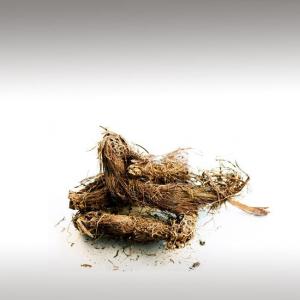

Botanical Name: Nardostachys grandiflora
Common Method of Extraction: Nardostachys jatamansi Syn. Nardostachys grandiflora
Part Typically Used: Rhizomes, roots
Color: Amber, dark, black
Consistency: Very thick
Perfumery Note: Base
Other names: Jatamansi, Spikenard, Nardostachys Jatamansi
Strength of Initial Aroma: Woody fragrance which is astonishingly herbaceous and aromatic, warm and sensual, also a combination of sweet, resinous, spicy, and animal-fat odors.
The Nard essential oil is like an organic earthy scent. It's earthy, scent is said to please the earth spirits. Commonly burned as incense among Himalayan dwellers to calm and sanctify the environment. Jatamansi oil has a strong fragrance of moist earth, like the high altitude forest floor where it is found, and the distinct odor of the valerianaceae family.
Nardostachys is a Persian word referring to the Nard plant. "Jatamansi"comes from the Sanskrit name from where it is found in India.
Spikenard essentail oil also called nard, nardin, and muskroot, is a class of aromatic amber-colored essential oil derived from flowering plants, the identification of which is variable. The oil has, since ancient times, been used as a perfume, as a medicine and in religious contexts, across a wide territory from India to Europe.
Nardostachys is found to occur between 3,300 and 6,000 m in the Himalayas: Kashmir (India), Uttar Pradesh (India), Nepal, Sikkim (India), Bhutan, South-West China including Tibet, Yunnan and southwest Sichuan. In nature, the plant is generally found clinging to steep rocky cliffs, stony and grassy slopes, and is rarely found as lithophytes. It is also reported from ravines of the rocks and crevices, small depressions, somewhat found in wet meadows and by the banks of the rivulets in the high valleys and peaks ranging from 3,000 - 4,000 m.
Nardostachys jatamansi (Jatamansi) is a perennial herb. It has a stout un-branched or sparsely-branched woody aromatic rhizome, covered with reddish-brown thick fibers of remnants, a petiole of withered radical leaves with a single long tap root, typically with 2-7 rhizomes but sometimes up to 15. The thickness and numbers ofrhizomes per plant depends on the age of plant.
Nard is one of the ancient incense utilized by the Egyptians. A description of Spikenard is also mentioned in the Song of Solomon in the Holy Bible. “While the king sitteth at his table, my Spikenard sendeth forth the smell thereof". The essential oilwas also used by Roman perfumers. The oil was used by Roman perfumers and the Mughal empress Nur Jehan in her rejuvenating cosmetics preparations
Nard was one of the early aromatics used by the ancient Egyptians and is mentioned in the Bible in Song of Solomon, and in the Book of John where Mary used it to anoint the feet of Jesus.
Chemical strukture:
Rhizomes, rich in sesquiterpenoides, yield jatamanshic acid, jatamansone, patchouli alcohol, nor-seychelanone, seychellen, and alpha and beta patchoulene. The essential oil yields several hydrocarbons, a new oxide, beta-cudesmol, elemol, angelicin and jatamansinol.
Common Method of Extraction: Nardostachys jatamansi Syn. Nardostachys grandiflora
Part Typically Used: Rhizomes, roots
Color: Amber, dark, black
Consistency: Very thick
Perfumery Note: Base
Other names: Jatamansi, Spikenard, Nardostachys Jatamansi
Strength of Initial Aroma: Woody fragrance which is astonishingly herbaceous and aromatic, warm and sensual, also a combination of sweet, resinous, spicy, and animal-fat odors.
The Nard essential oil is like an organic earthy scent. It's earthy, scent is said to please the earth spirits. Commonly burned as incense among Himalayan dwellers to calm and sanctify the environment. Jatamansi oil has a strong fragrance of moist earth, like the high altitude forest floor where it is found, and the distinct odor of the valerianaceae family.
Nardostachys is a Persian word referring to the Nard plant. "Jatamansi"comes from the Sanskrit name from where it is found in India.
Spikenard essentail oil also called nard, nardin, and muskroot, is a class of aromatic amber-colored essential oil derived from flowering plants, the identification of which is variable. The oil has, since ancient times, been used as a perfume, as a medicine and in religious contexts, across a wide territory from India to Europe.
Nardostachys is found to occur between 3,300 and 6,000 m in the Himalayas: Kashmir (India), Uttar Pradesh (India), Nepal, Sikkim (India), Bhutan, South-West China including Tibet, Yunnan and southwest Sichuan. In nature, the plant is generally found clinging to steep rocky cliffs, stony and grassy slopes, and is rarely found as lithophytes. It is also reported from ravines of the rocks and crevices, small depressions, somewhat found in wet meadows and by the banks of the rivulets in the high valleys and peaks ranging from 3,000 - 4,000 m.
Nardostachys jatamansi (Jatamansi) is a perennial herb. It has a stout un-branched or sparsely-branched woody aromatic rhizome, covered with reddish-brown thick fibers of remnants, a petiole of withered radical leaves with a single long tap root, typically with 2-7 rhizomes but sometimes up to 15. The thickness and numbers ofrhizomes per plant depends on the age of plant.
Nard is one of the ancient incense utilized by the Egyptians. A description of Spikenard is also mentioned in the Song of Solomon in the Holy Bible. “While the king sitteth at his table, my Spikenard sendeth forth the smell thereof". The essential oilwas also used by Roman perfumers. The oil was used by Roman perfumers and the Mughal empress Nur Jehan in her rejuvenating cosmetics preparations
Nard was one of the early aromatics used by the ancient Egyptians and is mentioned in the Bible in Song of Solomon, and in the Book of John where Mary used it to anoint the feet of Jesus.
Chemical strukture:
Rhizomes, rich in sesquiterpenoides, yield jatamanshic acid, jatamansone, patchouli alcohol, nor-seychelanone, seychellen, and alpha and beta patchoulene. The essential oil yields several hydrocarbons, a new oxide, beta-cudesmol, elemol, angelicin and jatamansinol.
Submitted by OperaDreamhouse (March 5, 2015)
Omani Frankincense Essential Oil (Boswellia Sacra) ☸ Essential oils ☸ Base / General
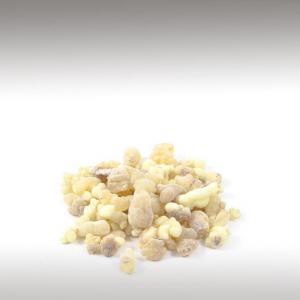

Botanical Name: Boswellia sacra
Common Method of Extraction: Steam Distilled
Part Typically Used: Resin
Color: Pale yellow
Consistency: Thin
Perfumery Note: Base
Strength of Initial Aroma: Sweet, light, almost floral aroma,
The English word is derived from Old French "Franc Encens" (high quality incense).
Frankincense, also called Olibanum, is an aromatic resin used in incense and perfumes, obtained from trees of the genus Boswellia in the family Burseraceae, particularly Boswellia Sacra. It is native to the Arabian Peninsula (Oman, Yemen), and northeastern Africa (Somalia).
Boswellia sacra is abundant in Oman and southern Yemen in arid woodland, on the steep, precariously eroding slopes in the mountains of Dhofar, but it is most prevalent in northern Somalia.
This species of Boswellia is a small deciduous tree, which reaches a height of 2 to 8 m, with one or more trunks. Its bark has the texture of paper and can be removed easily. It has compound leaves and an odd number of leaflets, which grow opposite to one another along its branches.
The trees start producing resin when they are about 8 to 10 years old. As the resin is exuded it hardens and the tears are collected 2 - 3 times a year. On average, a tree will produce 1 kilogram of resin per year which can then be extracted into approximately two 15ml bottles of pure essential oil.
The Boswellia Sacra resin is extracted by making a small, shallow incision on the trunk or branches of the tree or by removing a portion of the crust of it. The resin is drained as a milky substance that coagulates in contact with air and is collected by hand.
Trees in the narrow fog-laden zone where the desert meets Dhofar mountain range, a region known as the Nejd, grow extremely slowly and produce very high quality resin in large, white clumps. Not surprisingly, Omanis and other Gulf State Arabs consider this to be superior to all other resins produced in North and Northeast Africa, India and Asia, and it is priced accordingly.
The trees in the Dhofar region of Oman are revered as a gift from God. This Frankincense oleogum resin oil was steam distilled and wild harvested in the Dhofar Valley of Oman. Boswellia Sacra essential oil was prepared from Omani Hougari grade resins through hydrodistillation at 78 or 100 °C for 12 hours.
Chemical structure:
Frankincense essential oil contains 8% sesquiterpenes and is 78% monoterpenes. Monoterpenes are known to be calming and restorative.
Distillation method: This essential oil is also produced by CO2 extraction, specifically, because the CO2 oil naturally contains heavier-weight molecules not found in the steam distilled oil, and an overall large percentage of the oil is also of these molecular forms. So in CO2 extraction Frankincense essential oil you get the best of both worlds: the bright, sweet notes of a steam distillation, and the heaviermolecular weight compounds found in a CO2 extract.
Although from time immemorial this resin is distilled with steam, and this is a classic way. Both methods are good: CO2 extraction is a new way of extracting, and steam distillation is classic way of extraction.
Common Method of Extraction: Steam Distilled
Part Typically Used: Resin
Color: Pale yellow
Consistency: Thin
Perfumery Note: Base
Strength of Initial Aroma: Sweet, light, almost floral aroma,
The English word is derived from Old French "Franc Encens" (high quality incense).
Frankincense, also called Olibanum, is an aromatic resin used in incense and perfumes, obtained from trees of the genus Boswellia in the family Burseraceae, particularly Boswellia Sacra. It is native to the Arabian Peninsula (Oman, Yemen), and northeastern Africa (Somalia).
Boswellia sacra is abundant in Oman and southern Yemen in arid woodland, on the steep, precariously eroding slopes in the mountains of Dhofar, but it is most prevalent in northern Somalia.
This species of Boswellia is a small deciduous tree, which reaches a height of 2 to 8 m, with one or more trunks. Its bark has the texture of paper and can be removed easily. It has compound leaves and an odd number of leaflets, which grow opposite to one another along its branches.
The trees start producing resin when they are about 8 to 10 years old. As the resin is exuded it hardens and the tears are collected 2 - 3 times a year. On average, a tree will produce 1 kilogram of resin per year which can then be extracted into approximately two 15ml bottles of pure essential oil.
The Boswellia Sacra resin is extracted by making a small, shallow incision on the trunk or branches of the tree or by removing a portion of the crust of it. The resin is drained as a milky substance that coagulates in contact with air and is collected by hand.
Trees in the narrow fog-laden zone where the desert meets Dhofar mountain range, a region known as the Nejd, grow extremely slowly and produce very high quality resin in large, white clumps. Not surprisingly, Omanis and other Gulf State Arabs consider this to be superior to all other resins produced in North and Northeast Africa, India and Asia, and it is priced accordingly.
The trees in the Dhofar region of Oman are revered as a gift from God. This Frankincense oleogum resin oil was steam distilled and wild harvested in the Dhofar Valley of Oman. Boswellia Sacra essential oil was prepared from Omani Hougari grade resins through hydrodistillation at 78 or 100 °C for 12 hours.
Chemical structure:
Frankincense essential oil contains 8% sesquiterpenes and is 78% monoterpenes. Monoterpenes are known to be calming and restorative.
Distillation method: This essential oil is also produced by CO2 extraction, specifically, because the CO2 oil naturally contains heavier-weight molecules not found in the steam distilled oil, and an overall large percentage of the oil is also of these molecular forms. So in CO2 extraction Frankincense essential oil you get the best of both worlds: the bright, sweet notes of a steam distillation, and the heaviermolecular weight compounds found in a CO2 extract.
Although from time immemorial this resin is distilled with steam, and this is a classic way. Both methods are good: CO2 extraction is a new way of extracting, and steam distillation is classic way of extraction.
Submitted by OperaDreamhouse (March 4, 2015)
Myrrh Essential Oil (Commiphora Myrrha) ☸ Essential oils ☸ Base / General
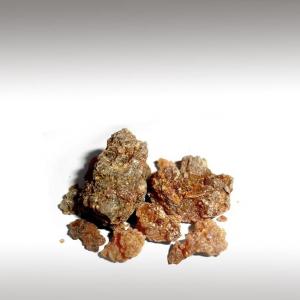

Botanical Name: Commiphora myrrha
Common Method of Extraction: Steam Distilled
Part Typically Used: Resin
Color: Dark aber
Consistency: Thick
Perfumery Note: Base
Strength of Initial Aroma: Warm, slightly musty smell.
Myrrh gum is commonly harvested from the species Commiphora Myrrha, which is native to Yemen, Somalia, Eritrea and eastern Ethiopia.
It is a small tree that can grow up to 5 meters high with light bark and knotted branches, few leaves and small white flowers. When the bark is cut, the gum resinexudes as a pale yellow liquid, which dries into reddish-brown lumps the size of a walnut from which the oil is distilled.
The word "Myrrh" derives from the Aramaic "Murr", and Arabic "Mur" meaning "Bitter". Its name entered the English language from the Hebrew Bible, where it is called "Mor", and later as a Semitic loanword was used in the Greek myth of Myrrha, and later in the Septuagint, in the Greek language, the related word "Mýron" became a general term for perfume.
Myrrh (Mur), is the aromatic resin of a number of small, thorny tree species of the genus Commiphora, which is an essential oil termed an oleoresin. Myrrh resin is a natural gum. It has been used throughout history as a perfume, incense and medicine.
Myrrh gum is waxy, and coagulates quickly. After the harvest, the gum becomes hard and glossy. The gum is yellowish, and may be either clear or opaque. It darkens deeply as it ages, and white streaks emerge.
Myrrh was used by the ancient Egyptians, along with natron, for the embalming of mummies.
Myrrh was traded by camel caravans overland from areas of production in southern Arabia by the Nabataeans to their capital city of Petra, from which it was distributed throughout the Mediterranean region.
Myrrh is mixed with Frankincense and sometimes more scents and is used in almost every service of the Eastern Orthodox, Oriental Orthodox, traditional Roman Catholic and Anglican / Episcopal Churches.
Common Method of Extraction: Steam Distilled
Part Typically Used: Resin
Color: Dark aber
Consistency: Thick
Perfumery Note: Base
Strength of Initial Aroma: Warm, slightly musty smell.
Myrrh gum is commonly harvested from the species Commiphora Myrrha, which is native to Yemen, Somalia, Eritrea and eastern Ethiopia.
It is a small tree that can grow up to 5 meters high with light bark and knotted branches, few leaves and small white flowers. When the bark is cut, the gum resinexudes as a pale yellow liquid, which dries into reddish-brown lumps the size of a walnut from which the oil is distilled.
The word "Myrrh" derives from the Aramaic "Murr", and Arabic "Mur" meaning "Bitter". Its name entered the English language from the Hebrew Bible, where it is called "Mor", and later as a Semitic loanword was used in the Greek myth of Myrrha, and later in the Septuagint, in the Greek language, the related word "Mýron" became a general term for perfume.
Myrrh (Mur), is the aromatic resin of a number of small, thorny tree species of the genus Commiphora, which is an essential oil termed an oleoresin. Myrrh resin is a natural gum. It has been used throughout history as a perfume, incense and medicine.
Myrrh gum is waxy, and coagulates quickly. After the harvest, the gum becomes hard and glossy. The gum is yellowish, and may be either clear or opaque. It darkens deeply as it ages, and white streaks emerge.
Myrrh was used by the ancient Egyptians, along with natron, for the embalming of mummies.
Myrrh was traded by camel caravans overland from areas of production in southern Arabia by the Nabataeans to their capital city of Petra, from which it was distributed throughout the Mediterranean region.
Myrrh is mixed with Frankincense and sometimes more scents and is used in almost every service of the Eastern Orthodox, Oriental Orthodox, traditional Roman Catholic and Anglican / Episcopal Churches.
Submitted by OperaDreamhouse (March 4, 2015)
Palmarosa Essential Oil (Cymbopogon Martinii) ☸ Essential oils ☸ Base / General
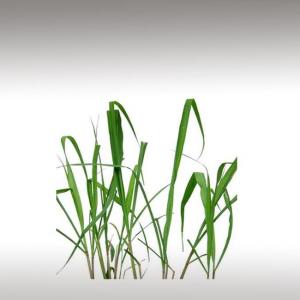

Botanical Name: Cymbopogon martinii
Common Method of Extraction: Steam Distilled
Part Typically Used: Dried grass
Color: Pale yellow
Consistency: Thin
Perfumery Note: Middle
Strength of Initial Aroma: Sweet floral, with a hint of rose smell, rosy-floral odour with subtle fruity, spicy and woody nuances.
Other names: Indian Geranium, Rosha, rosha Grass and Motia Grass.
Cymbopogon martinii is a species of grass in the lemon Grass genus best known by the common name Palmarosa. Palmarosa oil is extracted from Cymbopogon Martinii of the Gramineae family and is also known as East Indian and Turkish Geranium, as well as Indian Rosha and Motia.
Palmarosa essential oil is obtained from a sweet-scented grass found growing wild throughout India, especially to the northeast of Bombay and toward the Himalaya Mountains, Nepal and Pakistan.
It is a wild growing, herbaceous green and straw-colored grass, with long slender stems, terminal flowering tops and fragrant grassy leaves. It is harvested before the flowers appear and the highest yield is obtained when the grass is fully dried - about one week after it has been cut.
This essential oil content of the bright-green leaves varies along their length, with the very highest concentration of essential oil being found in the tops of the leaves which release a fresh, grassy rose-like aroma when crushed between the fingers.
In India, the grass begins to bud during the latter part of August and flowers appear during October. Wild specimens may survive for 10 or 15 years, whereas plants cultivated for the extraction of Palmarosa essential oil remain productive around 6 to 10 years.
Palmarosa oil has been obtained through steam distillation since the 18th century. This particular essential oil is fast becoming a firm favorite inessential oil therapy and aromatherapy. Because Palmarosa essential oil has a rose-like smell, it is often used by unscrupulous essential oil wholesalers and retailers to adulterate Rose essential oil.
A good quality Palmarosa oil is almost a perfume in itself, but the fragrance may be quite variable from origin to origin.
Chemical structure:
One of the active compounds it contains is geraniol, which is aromatic and has medicinal and household uses.
Common Method of Extraction: Steam Distilled
Part Typically Used: Dried grass
Color: Pale yellow
Consistency: Thin
Perfumery Note: Middle
Strength of Initial Aroma: Sweet floral, with a hint of rose smell, rosy-floral odour with subtle fruity, spicy and woody nuances.
Other names: Indian Geranium, Rosha, rosha Grass and Motia Grass.
Cymbopogon martinii is a species of grass in the lemon Grass genus best known by the common name Palmarosa. Palmarosa oil is extracted from Cymbopogon Martinii of the Gramineae family and is also known as East Indian and Turkish Geranium, as well as Indian Rosha and Motia.
Palmarosa essential oil is obtained from a sweet-scented grass found growing wild throughout India, especially to the northeast of Bombay and toward the Himalaya Mountains, Nepal and Pakistan.
It is a wild growing, herbaceous green and straw-colored grass, with long slender stems, terminal flowering tops and fragrant grassy leaves. It is harvested before the flowers appear and the highest yield is obtained when the grass is fully dried - about one week after it has been cut.
This essential oil content of the bright-green leaves varies along their length, with the very highest concentration of essential oil being found in the tops of the leaves which release a fresh, grassy rose-like aroma when crushed between the fingers.
In India, the grass begins to bud during the latter part of August and flowers appear during October. Wild specimens may survive for 10 or 15 years, whereas plants cultivated for the extraction of Palmarosa essential oil remain productive around 6 to 10 years.
Palmarosa oil has been obtained through steam distillation since the 18th century. This particular essential oil is fast becoming a firm favorite inessential oil therapy and aromatherapy. Because Palmarosa essential oil has a rose-like smell, it is often used by unscrupulous essential oil wholesalers and retailers to adulterate Rose essential oil.
A good quality Palmarosa oil is almost a perfume in itself, but the fragrance may be quite variable from origin to origin.
Chemical structure:
One of the active compounds it contains is geraniol, which is aromatic and has medicinal and household uses.
Submitted by OperaDreamhouse (March 3, 2015)
Page 27 of 48

